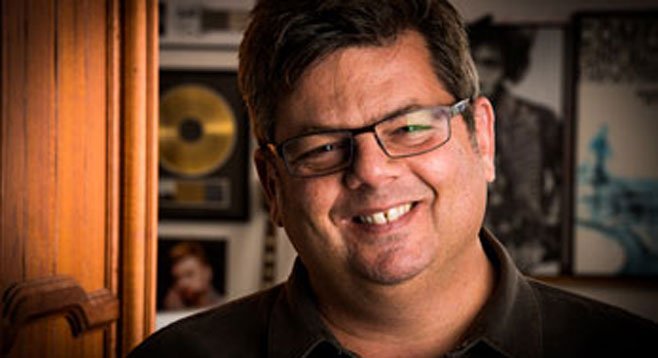 Facebook
Facebook
 X
X
 Instagram
Instagram
 TikTok
TikTok
 Youtube
Youtube

In February, San Diego–based Slacker, a streaming music service, underwent a redesign and relaunch that they say netted them six million new listeners. This month, the company plans to introduce a digital tool they call “the Engagement Quotient,” which will fine-tune listener data to give fans, artists, and labels a real-time view of trends.
Jack Isquith is Slacker’s senior vice president of content programming and strategic development. He says that within Slacker’s 13-million-song library are billions of user data points. He thinks he can use those data points to fine-tune the internet station in a way that conventional broadcast-radio programmers cannot.
“I found [the data] was much more robust than I thought it would be.” There are at least seven events in any listener transaction, he explains. “Starting the song, letting it complete, ‘hearting’ the song (something akin to the Facebook ‘like’ button), saving the song, and then there’s an entire range of negative actions.” Isquith says a listener may ban a song, ban an artist, or they might quit Slacker entirely in a fit of disdain. “It happens. What if, for example, we play a Billy Joel song at the wrong time and a Billy Joel hater hears it? We may lose them forever.”
Slacker was founded in 2006 in Rancho Bernardo. The service offers customizable curated channels, news, and sports talk, and both free and subscription-based streaming. Isquith says all the traditional pop-music charts are likewise based on reported sales or spins that say nothing about how engaged a listener may or may not be. “We’re just trying to lead the conversation with more talk about listener engagement and less talk about spins as a way of measuring.”
Slacker will publish Slacker EQ Top 40 charts on their blog. The data are revealing unexpected results: “For example, we’re seeing country artists performing as well as Rihanna.” Naturally, a Slacker EQ Top 40 channel is in the works, but for all of the research metrics that have gone into it, the station’s music direction sounds a lot like the Boss Radio of old.
“The science says we can play Tim McGraw and Justin Timberlake on the same station. We’re going to do just that,” Isquith says, “and hope it works out.”


In February, San Diego–based Slacker, a streaming music service, underwent a redesign and relaunch that they say netted them six million new listeners. This month, the company plans to introduce a digital tool they call “the Engagement Quotient,” which will fine-tune listener data to give fans, artists, and labels a real-time view of trends.
Jack Isquith is Slacker’s senior vice president of content programming and strategic development. He says that within Slacker’s 13-million-song library are billions of user data points. He thinks he can use those data points to fine-tune the internet station in a way that conventional broadcast-radio programmers cannot.
“I found [the data] was much more robust than I thought it would be.” There are at least seven events in any listener transaction, he explains. “Starting the song, letting it complete, ‘hearting’ the song (something akin to the Facebook ‘like’ button), saving the song, and then there’s an entire range of negative actions.” Isquith says a listener may ban a song, ban an artist, or they might quit Slacker entirely in a fit of disdain. “It happens. What if, for example, we play a Billy Joel song at the wrong time and a Billy Joel hater hears it? We may lose them forever.”
Slacker was founded in 2006 in Rancho Bernardo. The service offers customizable curated channels, news, and sports talk, and both free and subscription-based streaming. Isquith says all the traditional pop-music charts are likewise based on reported sales or spins that say nothing about how engaged a listener may or may not be. “We’re just trying to lead the conversation with more talk about listener engagement and less talk about spins as a way of measuring.”
Slacker will publish Slacker EQ Top 40 charts on their blog. The data are revealing unexpected results: “For example, we’re seeing country artists performing as well as Rihanna.” Naturally, a Slacker EQ Top 40 channel is in the works, but for all of the research metrics that have gone into it, the station’s music direction sounds a lot like the Boss Radio of old.
“The science says we can play Tim McGraw and Justin Timberlake on the same station. We’re going to do just that,” Isquith says, “and hope it works out.”
Comments